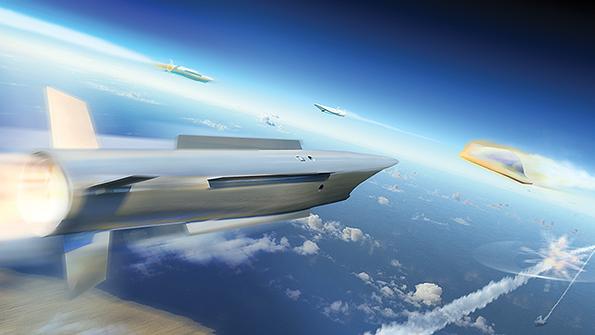
European countries have linked arms to develop a counter to the emerging threat of hypersonic weapons and enhance their ballistic missile defense (BMD) capabilities.
- Twister has been given backing by an EU PESCO initiative
- MBDA is investing in engagement planning for unpredictable targets
The Timely Warning and Interception with Space-based TheatER surveillance (Twister) project, led by France and supported by Finland, Italy, the Netherlands and Spain, is one of 13 new multinational programs that were given the backing of the EU’s Permanent Structured Cooperation (PESCO) initiative in November. It says it aims to develop a European system that can “detect, track and counter” more complex missile threats and give member nations a “self-standing ability to contribute to NATO’s ballistic missile defense.”
Currently, only a handful of European nations can counter ballistic missiles, including European users of the Raytheon Patriot (Germany, Greece, the Netherlands and Spain), as well as France and Italy with the Eurosam SAMP/T. But none of those systems is ready to deal with the new generation of threats emerging from Russia and China, including hypersonic gliders, hypersonic and high-supersonic cruise missiles, and maneuverable next-generation combat aircraft.
The U.S. has also begun examining technologies through its Regional Glide-Phase Weapon System (RGPWS), disclosed by Aviation Week in December, and the Hypersonic Defense Weapon System.
“We have seen the hypersonic threat coming,” says Rainer Stockhammer, team leader for Twister at European missile manufacturer MBDA. “Over the last five years we have performed studies into these new threats, which are new in terms of both novelty and maneuverability, and now we are in a position to answer this PESCO call.”
MBDA is now positioning itself for a role in developing the endoatmospheric interceptor that could be the backbone of the wider Twister system in the 2030s, describing the future system as “disruptive” and “technologically demanding.”
The company will not discuss what architecture it is studying for the future interceptor, but Stockhammer says MBDA’s experience with the Aster family of vertically launched surface-to-air missiles and the Meteor air-breathing, beyond-visual-range air-to-air missile has given it a “good position . . . to be able to develop a solution.”
The company’s artist’s impression depicts a missile clearly equipped with air intakes, which would suggest the use of a ramjet like on the Meteor.
Use of a ramjet would provide not only more range and speed, but also more energy in the final stages of an engagement to maneuver against hypersonic gliders and other maneuverable reentry vehicles.
“We know what kind of accuracy and range we need from the sensing part,” says Stockhammer. “Now we will look at a way to manage the unpredictability and look at engagement planning. . . . This is where we are investing.”
MBDA has also been looking at the command-and-control mechanisms required for such a system and how it would interface with existing and future sensors.
Individual governments will ultimately decide how they will equip with the future interceptor, but MBDA expects it to arm ships and a ground-based air defense system, with the expectation the system may have to squeeze into existing launch boxes and vertical launch tubes on surface ships.
Securing the nod from PESCO is a major step forward for the program. The next step will be for the five nations to begin hammering out a concept and a high-level requirement. MBDA officials say they are working toward a timeline of the 2030s to produce an operational system.
By working through PESCO, the five nations are hoping this will enable them to secure development funding from the European Defense Fund (EDF), which is expected to provide €13 billion ($15 billion) to support collaborative defense projects in 2021-27. It is unclear how much a program such as Twister could receive from the fund.
Money will also be provided by national governments involved in the Twister program.
Although MBDA lobbied in France for European nations to pursue an evolution of European BMD capabilities, prompting Paris to take a lead in what became Twister, the company is unlikely to be the only player in the program.
The interceptor will be just one component of Twister. The PESCO initiative also calls for space-based early warning, but no details have emerged about the European industry approach to this yet. PESCO and EDF rules call for cooperation between industry, particularly small and medium-size enterprises, as well as between member states.
“We would need to build an industry consortium that is clear, but it is too early to talk about how this might look,” notes Stockhammer.
The PESCO initiatives allow for additional nations to join and observe the programs, although it remains unclear whether the EU will allow so-called third countries, which will include the UK after Brexit, to participate in such projects. Denmark, Malta and the UK remain outside of PESCO.
Twister is the second missile initiative pursued by PESCO. The other is for a beyond-line-of-sight development of MBDA’s MMP man-portable guided missile, a program proposed by France and supported by Belgium and Cyprus.
